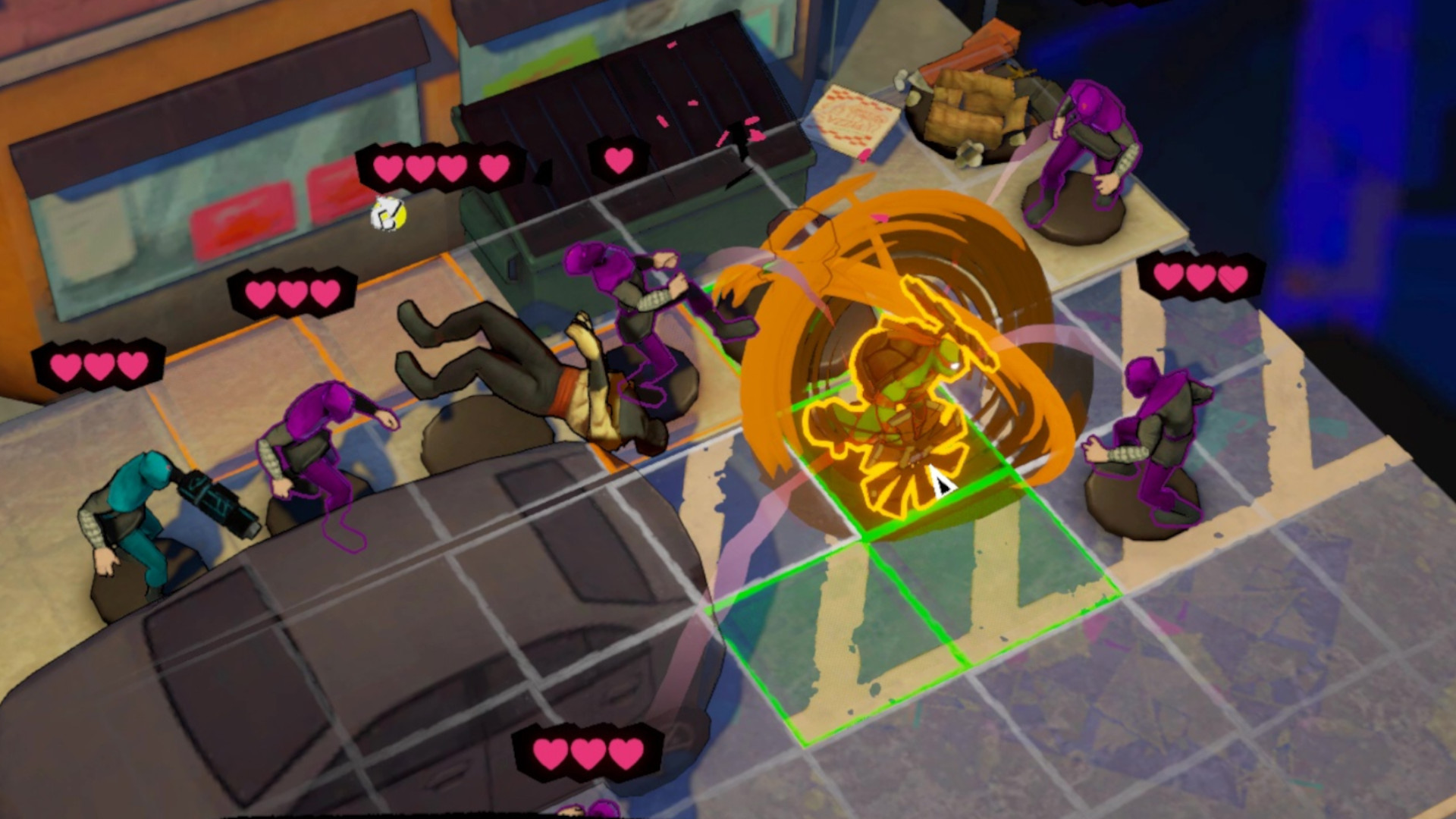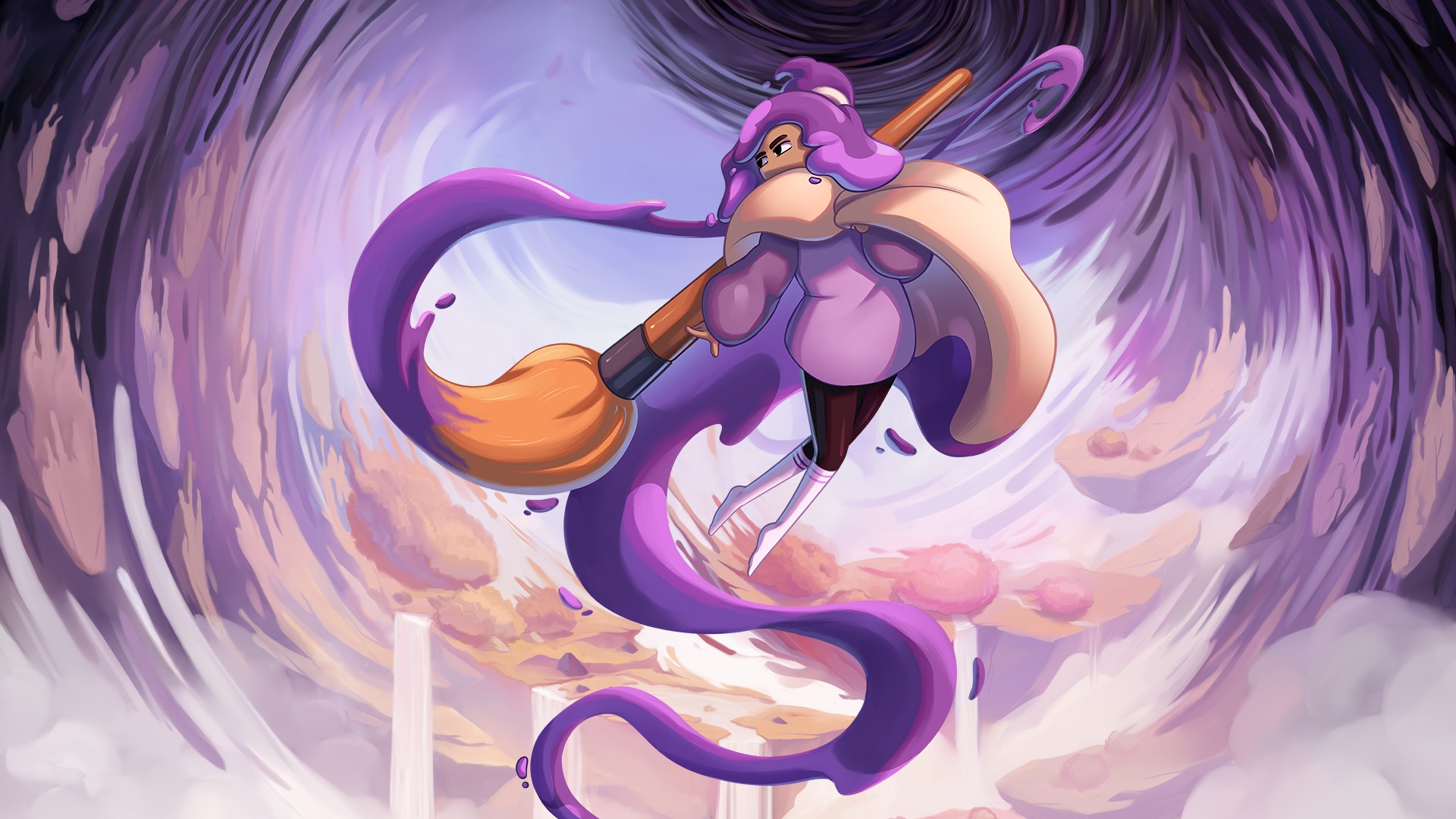GamesRadar+ Verdict
TMNT: Tactical Takedown is more experimentally thrilling than you might expect from a licensed game, its solo strategy fights packing so much momentum it almost feels like a brawler. A lack of variety in objectives and environments, along with some balancing issues, leave me wanting more from this short but cheesy (complimentary) experience – but this is still a radically easy recommendation.
Pros
- +
Movesets wonderfully capture each turtle's personality
- +
Super slick combat is satisfying
- +
Incredible electronic soundtrack
Cons
- -
Not a lot of level or mission variety
- -
Kicks can be overpowered
- -
Some optimal plays undermine other options
Why you can trust GamesRadar+
Playing Teenage Mutant Ninja Turtles: Tactical Takedown, Mikey spins his nunchucks to slide into the position of a nippy robot chomper, then kickflips over a foot clan ninja to suspend them in the air, helpless to evade an oncoming truck. Before he becomes a turtle pancake himself, he twirls past two more enemies, charging his energy just enough to ollie out of range of another foe trying to blast him with a freeze gun.
The brawls in TMNT: Tactical Takedown, the latest from indie punk dev Strange Scaffold, are so action-packed and slick you almost forget they're turn-based at all, even though they take place on a tactical grid. You're encouraged to keep your turtle on the move as each turn more of the evil Foot Clan swarm in, and as the levels slowly remove and add new bits of stage. Turtle and foe alike are represented almost like tabletop miniature figures, but alter key poses based on the last action they take – or strike they receive – so you still feel plenty of momentum in how they move. (Yes, ollie with Mikey and that's the pose you get, suspended in mid-air. Tubular.).
Cowabunga hunger
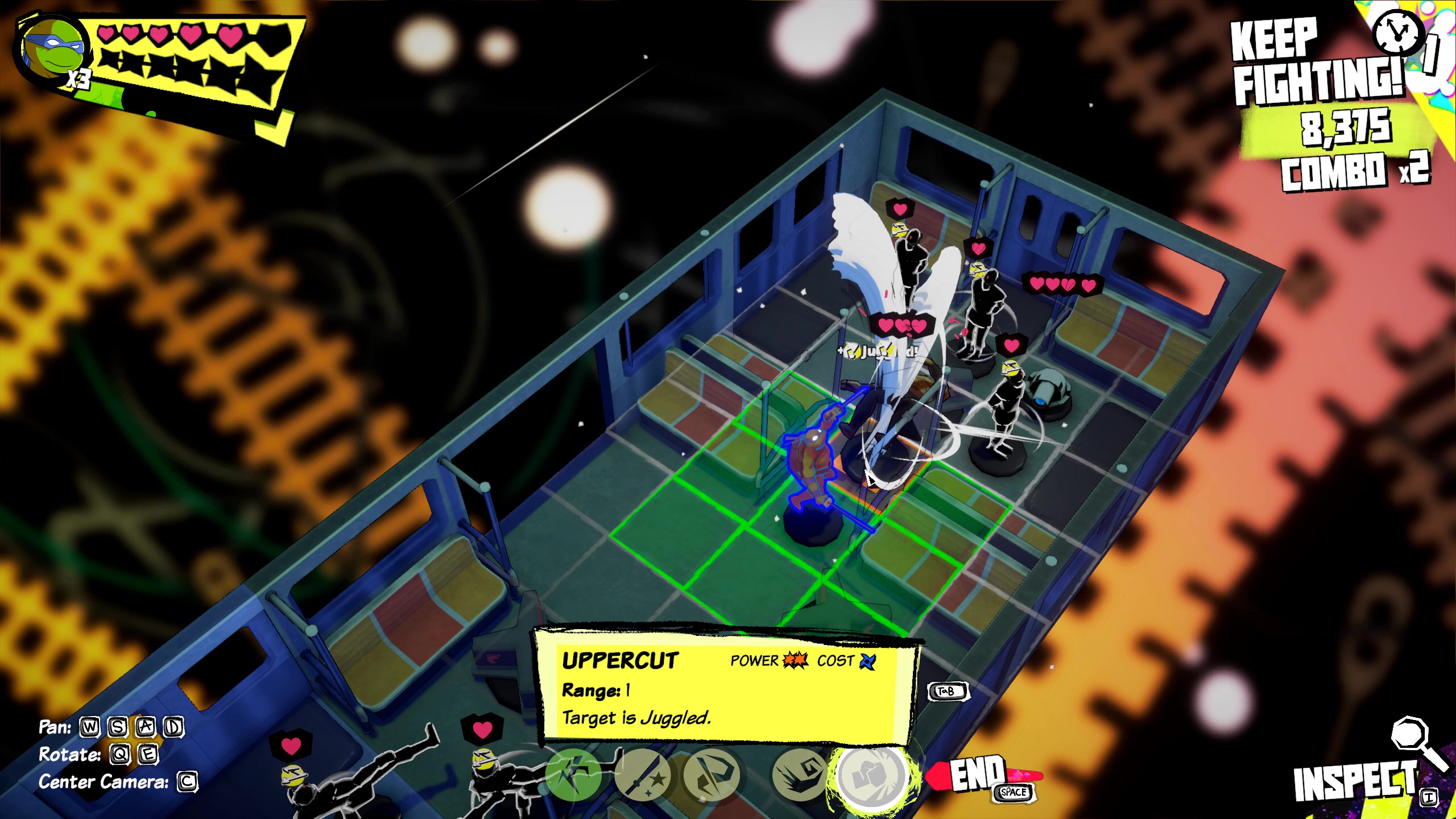
Developer: In-house
Publisher: Strange Scaffold
Platform(s): PC
Release date: May 22, 2025
Strange Scaffold's take on the turtles is its own, taking a lot of cues from the bright colors of the '80s cartoon, combined with menus that have a distinctly comic book-inspired look. Picking up after both their sworn enemy and leader of the Foot Clan, Shredder, is killed, as well as their own mentor and father Master Splinter, the teenaged team have gone their own ways. Until chaos strikes, and the Foot Clan attacks New York City en masse with a new leader, and they need to come together.
With that said, you're only ever controlling one turtle at a time. While you can envision a version of the pitch that has you controlling all four, I think it's a smart choice to keep things focused. TMNT: Tactical Takedown really tries to avoid overcomplication, and keeping you dialled in specifically to how your single hero can attack and move means mopping up a wave of enemies can take literal seconds before you move on from your turn.
Each turtle feels radically different to play as, even before you start swapping in alternate loadouts (which you can earn by spending currency rewarded for doing well). Michelangelo, as mentioned, is geared towards staying on the move, peeling through foes and leaving them hanging. Donatello, on the other hand, is about keeping foes at bay and controlling their movement using his tech traps like shock panels. Raphael, more hot-headed, can push and pull enemies to debuff them to take even more damage and hit them in groups. Leonardo, as the leader, uses his swords to duel – building stacks of damage-boosting and evasion buffs to stand his ground.
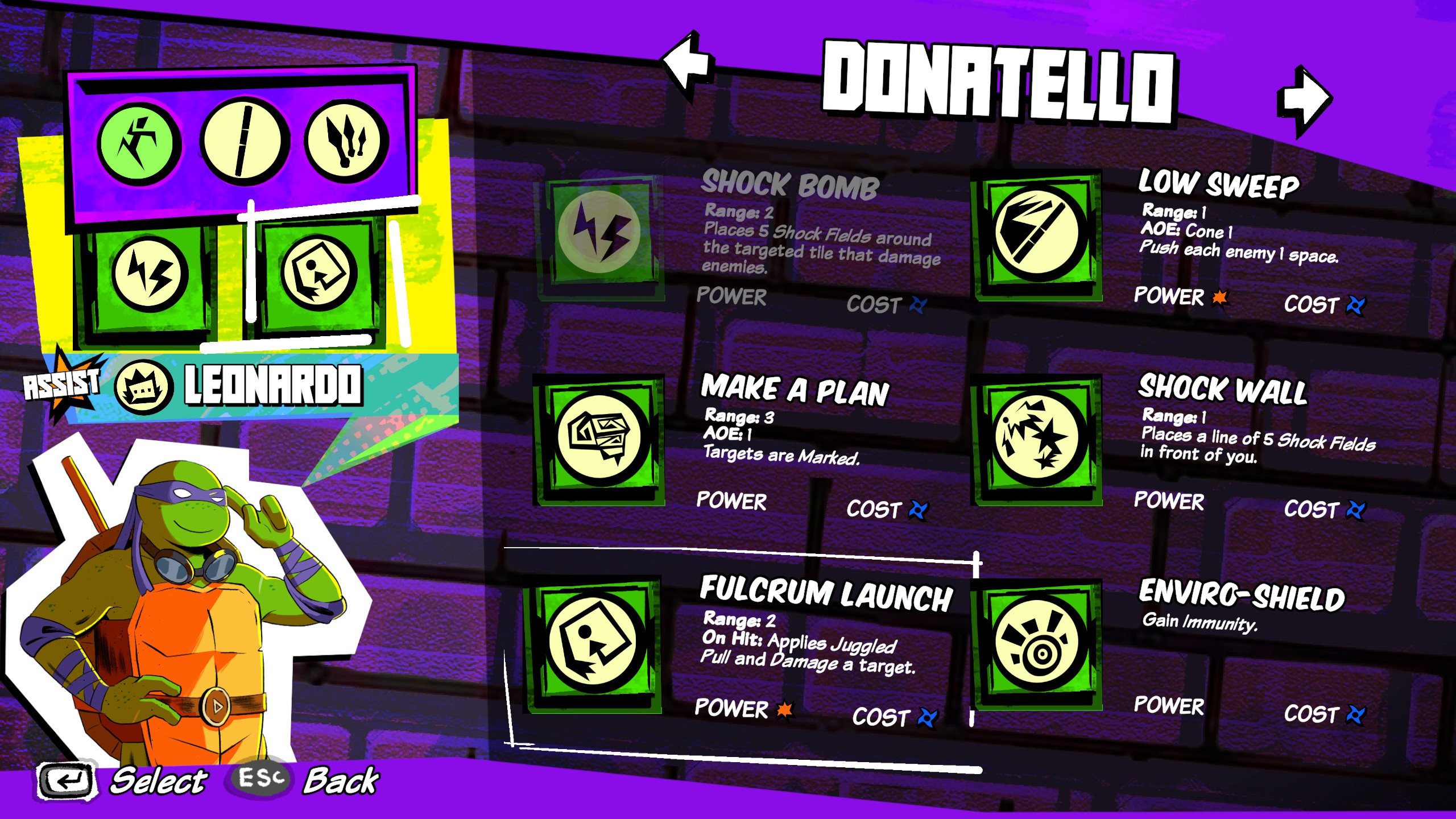
Learning how to best use these loadouts, and customizing some of the moves on the margins (essentially, two core abilities always come as a set, with two bonus moves that can be switched out more freely) is tremendous fun. And necessary, too. When you're on a roll, tearing through The Foot and seeing their miniatures literally scatter about the screen, you feel tremendously powerful. But with more enemies spawning in each turn it's easy to fall behind the curve as hordes pile up – and your shell will only protect you so much.
There are no real purely defensive options, so the only ways to avoid taking damage is to take out enemies on the map or stop them from being able to hit you (either by stunning or getting out of the way). The play space is often quite tight by design, so there are only so many options once loads of enemies are present, and only so much damage you can output with the action points available each turn.
Weekly digests, tales from the communities you love, and more
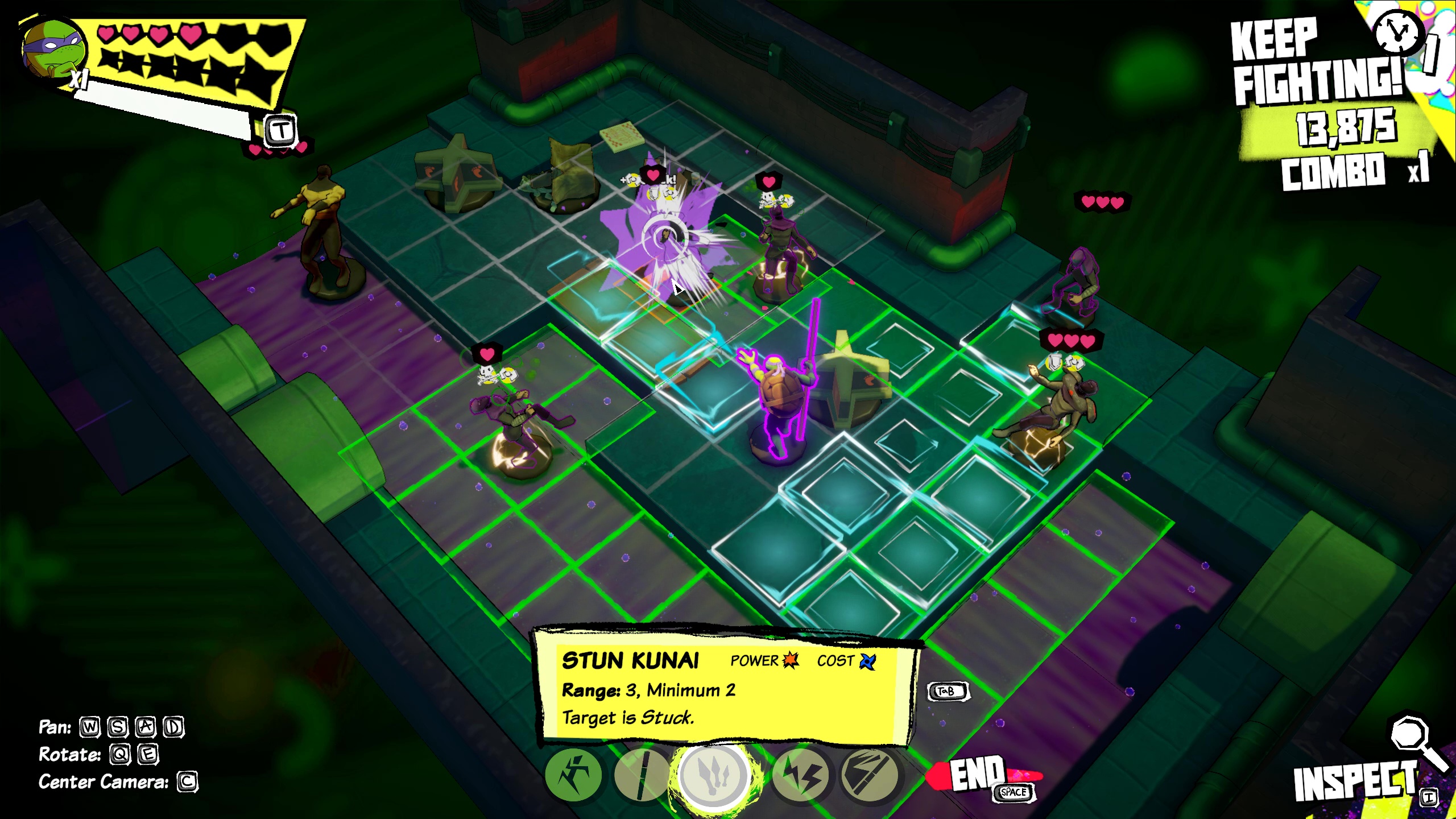
Somewhat addressing this is level mutation. Essentially, as action progresses, chunks of the stage behind you fall away, and new chunks appear. A 'GO' sign even appears, nodding towards TMNT's long history of beat 'em up brawlers, which TMNT: Tactical Takedown seriously draws from, even if the form of play input is ostensibly different.
Enemies caught up in the red zone will fall away, so some clumps can be left in the dust – though they are often speedy enough to stay. Other stage hazards can be used to your advantage, such as pushing foes into falling debris or getting them to stand in the way of oncoming traffic. There's some leeway if it all gets too much with a life system allowing you to respawn, giving you three chances each stage. There's a score counter and a challenge to reach a 'rad' amount for each, which is quite fun to chase on replays, which gives you ample reason to avoid respawns unless you really need them.
Street level heroes
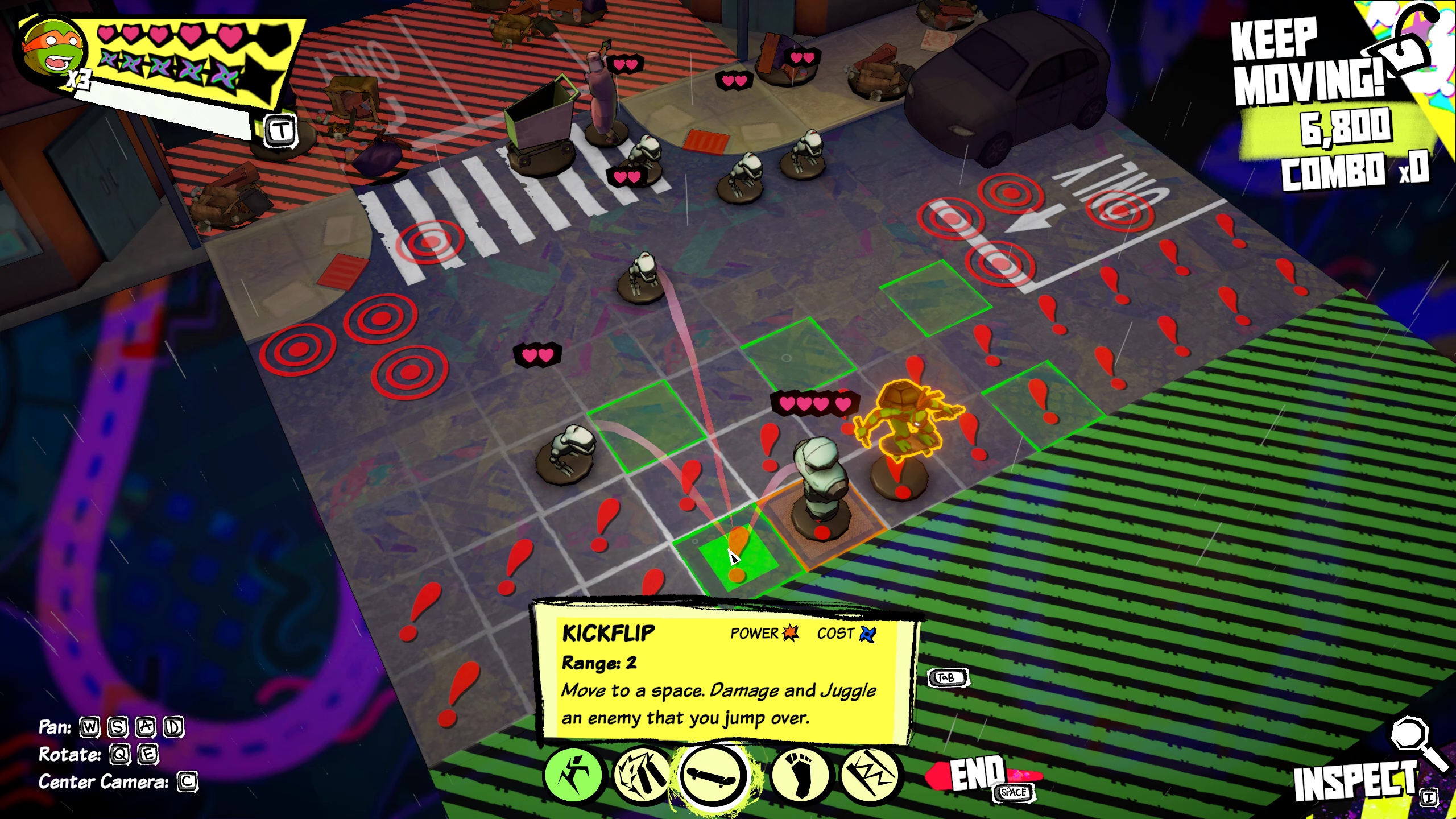
"The streets have traffic, but also friendly hot dog vendors who throw delicious, healing sausage treats."
Across its 20 levels, there's only a handful of level environment types, often associated more closely with each turtle – the story has you bouncing between them, fixed for each stage. Mikey, for instance, skates through the streets above while Donatello tracks the Foot Clan's movements through the sewers. These inherently come with their own quirks. The streets have traffic, but also friendly hot dog vendors who throw delicious, healing sausage treats, while the sewer's waters can poison turtles and foe alike should they stand within.
But there's not that much variation in how the stages progress or what they get you to do. Often they revolve around moving forward before stopping briefly to either holdout for a certain number of turns or dispatch X amount of a particular highlighted enemy type. Each level is pretty snappy, never taking more than 15 minutes and often much less – but each excursion to, say, the rooftops, functionally feels like the last. Only one stage, Algorithm Assessment, really mixes it up, forcing Donatello to defend a single larger-than-usual room in the sewers, an excellent way to play around with his defensive combat style.
Though the rooftops and subway system theoretically lend themselves to more opportunities to knock enemies off the map for instant kills, in practice – with every area a small arena – this is a valid strategy almost constantly. Big kicks are the not-so-secret weapon that sort of undermines TMNT: Tactical Takedown. As long as an enemy gets knocked off a map, they will instantly be KO'd, and the action point cost of push moves are always relatively low. A lot of other skill options can be unnecessary compared to just punting – which is pretty satisfying, don't get me wrong – stopping other inventive skills from really shining.
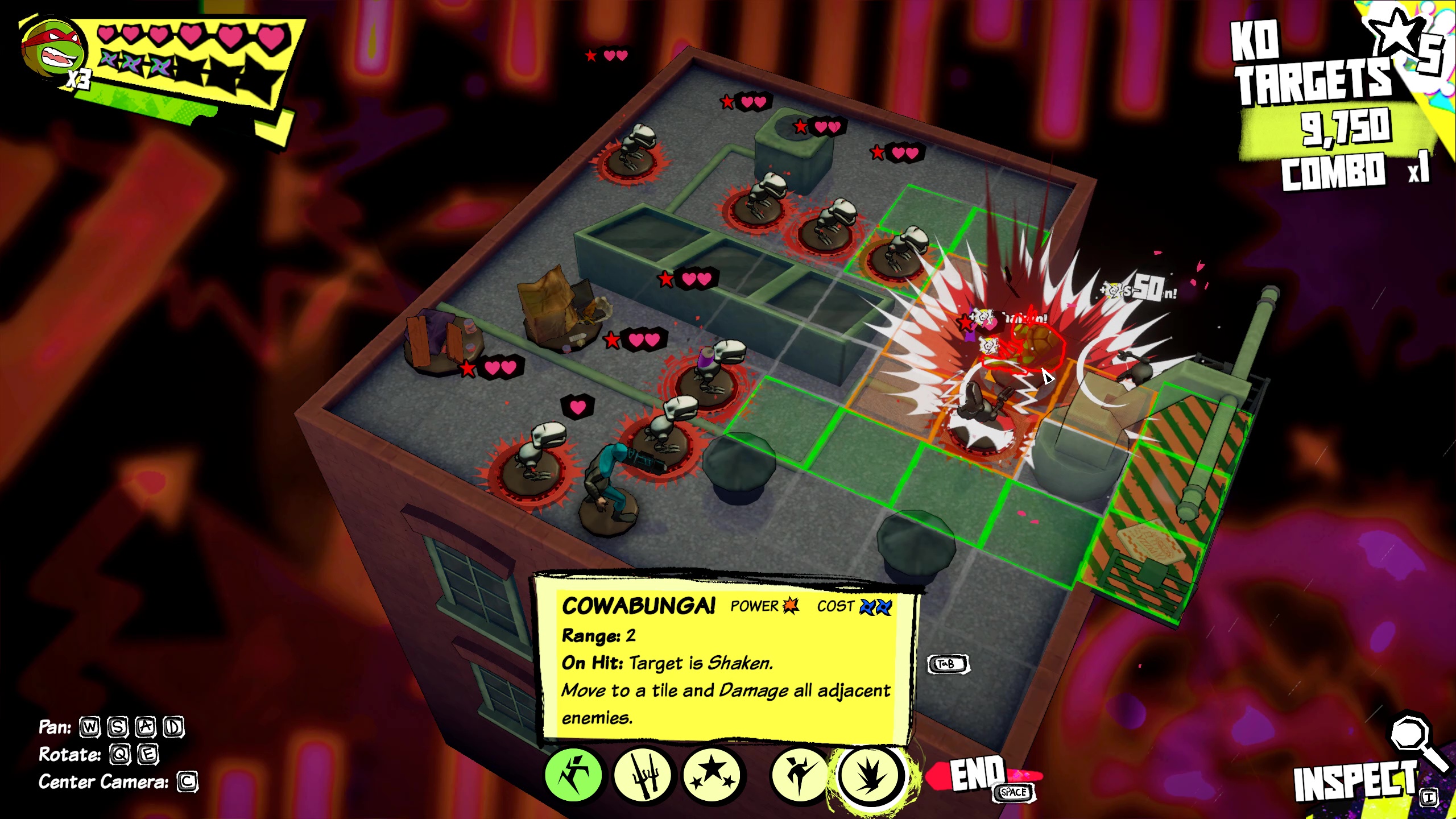
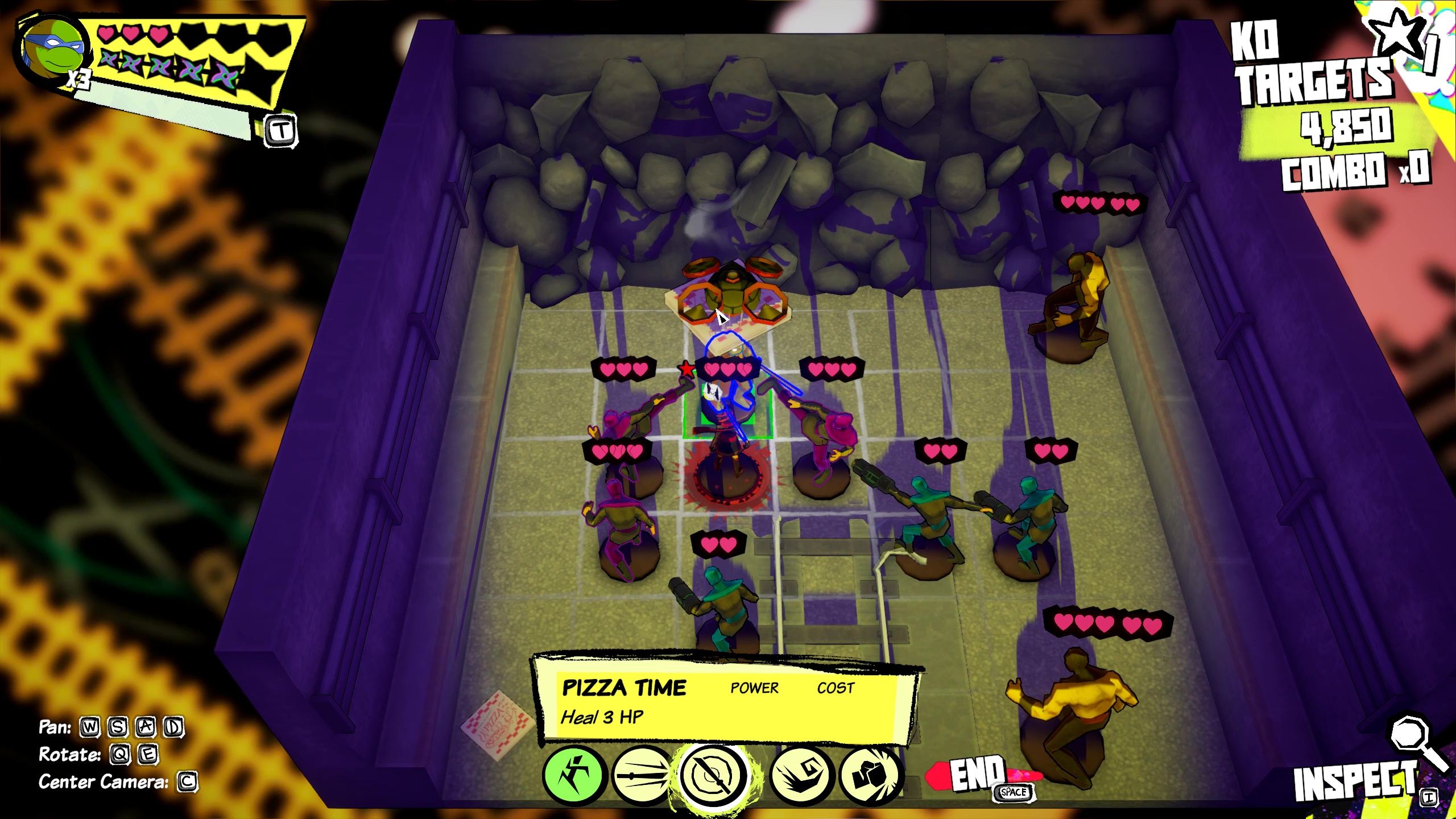
Build up enough meter and your turtle bros can help you out with special moves. Struggling? Mikey's Pizza Time can deliver a 3 health heal directly to you – but he can't use it on himself.
With the sheer number of enemies constantly swarming, if you don't leverage the likes of big kicks you'll just get stomped to death. Nothing feels as rough as being surrounded by six enemies all piling on the damage while a spinning full-heal pizza lies just out of reach. You get to grips with optimal play quite quickly out of necessity, learning how to simply use moves to take out most enemies at a total cost of 2 AP or less. The whole game only took me around five hours on a first playthrough, but I was seeing the wireframe by the second half.
There are some other issues that undermine the joy of expressive play – a shame as that's where TMNT: Tactical Takedown is at its most tubular. A final sequence that intriguingly smushes together narrative and mechanics completely alters your loadout and restricts your play a bit too much, making me just wish I was back playing the turtles as they were in earlier levels. Some mechanical oversights also frustrate, like a preview line showing which enemies are able to attack a turtle on which grid square not always being accurate, or a level mutation appearing under my turtle during a boss fight the second I spend my final action point forcing me to instantly lose a life.
I love the way Teenage Mutant Ninja Turtles: Tactical Takedown feels to play as you run circles around legions of goons. There's an exciting inventiveness here that makes learning how it works a real thrill. But as a whole, it isn't quite able to capitalize on that vibe enough. I can appreciate a shorter game, but TMNT: Tactical Takedown's core ideas hold enough promise where I can't help but feel there's missed opportunities for more mission variety and depth. But while it lasts, it's a shell of a good time.
Teenage Mutant Ninja Turtles: Tactical Takedown was reviewed on PC, with a code provided by the publisher.
Looking for more thinking? We've got our best strategy games for you right here!

Games Editor Oscar Taylor-Kent brings his years of Official PlayStation Magazine and PLAY knowledge to the fore. A noted PS Vita apologist, he's also written for Edge, PC Gamer, SFX, Official Xbox Magazine, Kotaku, Waypoint, and more. When not dishing out deadly combos in Ninja Gaiden 4, he's a fan of platformers, RPGs, mysteries, and narrative games. A lover of retro games as well, he's always up for a quick evening speed through Sonic 3 & Knuckles or yet another Jakathon through Naughty Dog's PS2 masterpieces.
You must confirm your public display name before commenting
Please logout and then login again, you will then be prompted to enter your display name.
